Xiaomi Mi 8 and Pocophone F1 Review: A tale of two affordable flagships
By Chong Jinn Xiung September 11, 2018
- Pocophone F1 brings flagship processor to an insanely low budget price
- Mi 8 appeals to those seeking a premium build on a mid-range device
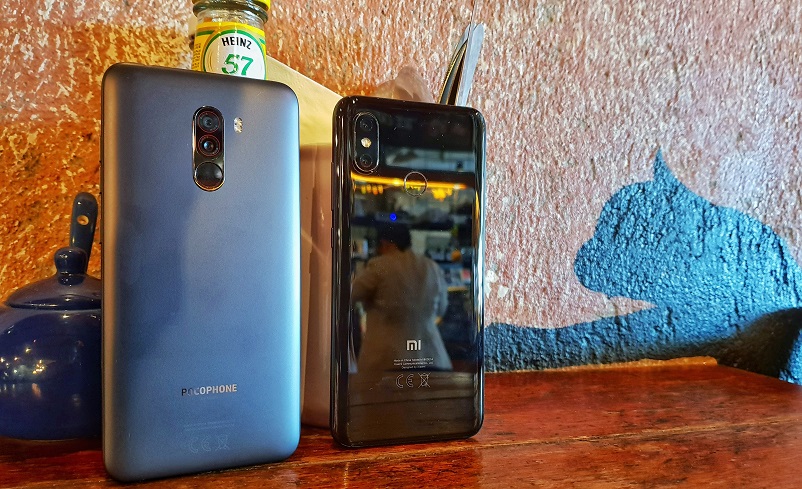
THERE is a battle brewing among smartphone vendors on the definition of what a “flagship” should be. Just how much are you prepared to pay for such a device? Is it RM5,000, RM3,000 or just RM2,000?
Whatever your answer may be, there are more phones in 2018 that are vying for that top dollar spot and as a result, prices are coming down. Possibly one of the most insane things we have heard thus far is the introduction of Xiaomi’s new Pocophone sub-brand and its F1 model which comes in at just US$298 (RM1,237 (pre-SST)) only.
At the same time, we have the US$385 (RM1,599) priced Xiaomi Mi 8 and though it is not disruptive in terms of its price point, it nonetheless offers a premium build quality and good camera below RM2,000.
Needless to say, we were really excited to review both these phones just to see what you get for a flagship that comes in at a budget price.
Design
Side by side, both the Mi 8 and F1 look nearly identical from the front. Though the Mi 8 has a marginally larger screen at 6.21-inch (83.8% screen-to-body ratio) and the F1 comes in at just 6.18-inch (82.2% screen-to-body ratio), you can hardly tell the difference.
Going beyond the size and the fact that both have notches, both differ in terms of screen quality. The Mi 8 has a Super AMOLED screen while the F1 has an IPS display.
No doubt the AMOLED screen trumps the IPS display as it is brighter, has better viewing angles and more vibrant colours. That is not to say the F1’s display is totally bad as it still is clear and serviceable for reading and watching videos.
Flip the two phones around and you will find that they look very different from the rear. The Mi 8 copies the iPhone X’s dual camera placement exactly, whereas the F1 places its cameras squarely down the middle. Both have fingerprint readers that are squarely in the centre.
Coming down to build quality. The Mi 8 looks the part of a premium device with a metal and glass construction which is common among devices of its range. The F1, meanwhile, clearly has a plastic construction and is actually thicker than the Mi 8.
Though the regular F1 does look somewhat uninspired and normal, there is an Armoured Edition of the phone with a Kevlar back that has yet to debut in Malaysia as of the time of this review. That would be the version to get if you want the best specs and better design.
But to each their own. Over lunch, a friend actually said he preferred the F1 over the Mi 8 when compared side by side.
Placement of the volume rocker and power button on the Mi 8 and F1 are identical, lining the right side of the device. Both have their SIM card trays on the left. The same layout is apparent on the bottom where you will find the USB-Type C port nested between the microphone and speaker.
It is interesting to note that the F1 comes with a 3.5mm headphone jack, which is increasingly rare among flagships but the F1 isn’t your typical flagship at that. This would be of great consideration if you don’t like wireless headphones and prefer listening with a good old pair of wired headphones.
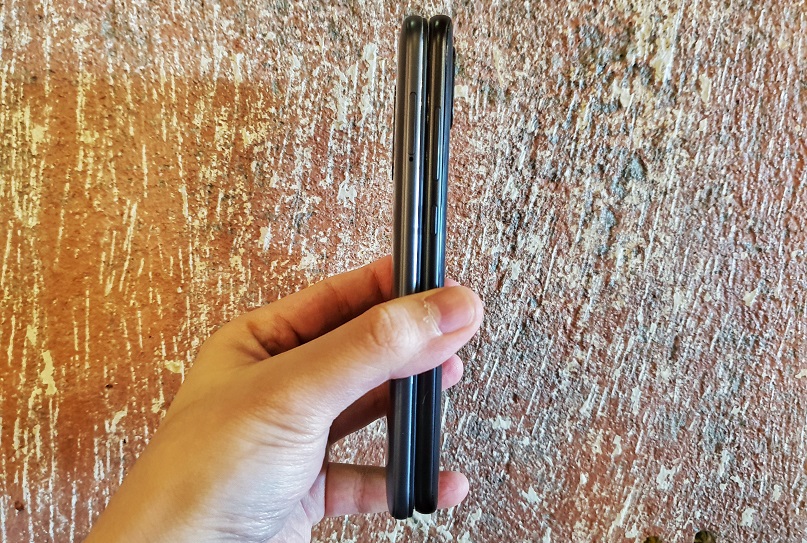
Performance
Though they are physically different, the Mi and F1 are very similar on the inside. Both are powered by Qualcomm Snapdragon 845 processors, one of the top-of-line processors in 2018.
The amazing thing about the F1 is that it is offering a very powerful processor at a budget price. It redraws the landscape completely and upsets the existing norm, putting to shame every phone at that range which typically holds a more modest Snapdragon 660 processor.
Both review models of these phones came with 6GB of RAM and 64GB, which is decent for a modern smartphone. The F1 does, however, have an advantage over the Mi 8 as it has a microSD card slot, so you if want to carry lots of songs, videos and games, this is the better choice.
Below are the benchmark results we ran on both phone models. As you may observe, both are quite similar given that they share the same processor.
Xiaomi Mi 8
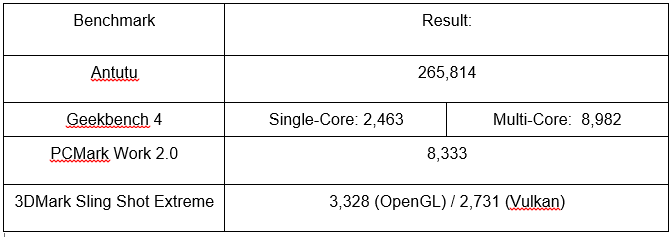
Pocophone F1
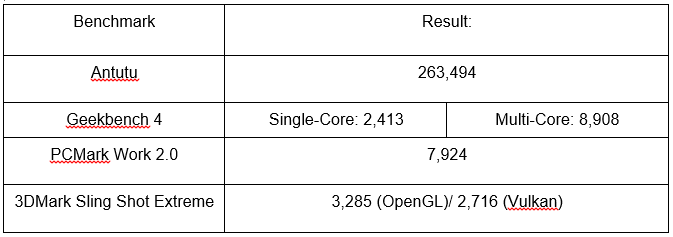
The Mi 8 has a marginal lead over the F1 in the results but in real-world usage, there is almost no difference in how they perform. Whether you are browsing the web or multi-tasking between multiple apps, both offer zippy fast performance.
If you are a gamer, you can’t go wrong with the Mi 8 and F1. Both are more than capable of running the very latest game, be it Asphalt 9, Darkness Rises or PUBG Mobile. There is hardly any lag with these games and you can run them at the highest settings with no dropped frames.
Interestingly, though both the Mi 8 and F1 run on Xiaomi’s MIUI 9.6, the Pocophone is slightly different in feel thanks to the inclusion of an App Drawer to store all your apps. Otherwise, the experience is the same, like the ability to turn off the Notch at will or remove the navigation bar and use gestures to get that iPhone-like X navigation interface.
When it comes down to battery performance, the F1 once again holds an advantage over the Mi 8 as it has a larger 4,000mAh battery compared to the latter’s 3,400mAh battery. Putting the F1 through its paces, the phone easily managed to last an entire day, leaving us with 40% of the battery.
Needless to say, if you are a power user, serious gamer or just love consuming videos non-stop, the F1 is the better pick.
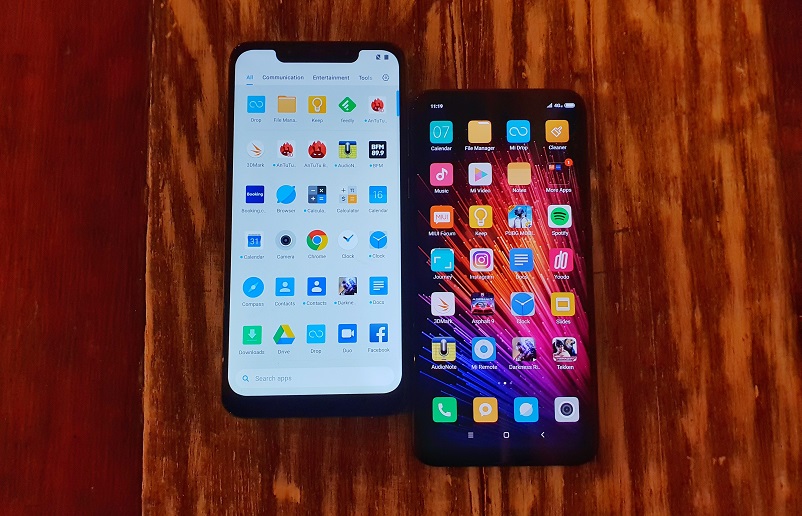
Camera
The camera is one of the sole differentiators between a premium smartphone and your average mid-range or budget model.
Both the Mi 8 and F1 have dual cameras though they are quite different from each other. The edge definitely goes to the Mi 8 as its 12-Megapixel main camera benefits from having 4-axis Optical Image Stabilisation (OIS) as well as a 12-Megapixel secondary camera that boasts 2x optical zoom.
The F1 also has a 12-Megapixel main camera though it lacks OIS making it not great for those with shaky hands. The 5-Megapixel secondary camera only acts as a depth sensor for snapping portraits.
When it comes down to the images and videos themselves, there is little to no surprise that the Mi 8 performs better than the F1. However, to the F1’s credit, it does pack as many features as possible including an Artificial Intelligence (AI) mode that automatically recognises scenes and bumps up the saturation and contrast.
Daytime shots are not a problem for both the Mi 8 and F1. But hands down, they differ greatly in their low-light performance with the Mi 8 being the better of the two, offering brighter and cleaner shots. The F1’s low-light results are noisier and not as bright, but if you can live with that, then its fine.
When it comes down to videos, the two phones offer identical performance. You can record up to UHD 4K quality videos and you get video stabilisation although the level of stabilisation isn’t going to match that of a flagship phone.
Conclusion
.png)
The Pocophone F1 is probably the most exciting mid-range smartphone to be released this year. The combination of a killer price, big battery and expandable storage makes this the ideal smartphone for someone looking to upgrade their phone this year and doesn’t need a superb camera.
Xiaomi’s Mi 8, on the other hand, is attractive in its own right as a premium offering that is just marginally more expensive than the F1. Though it lacks the bells and whistles of a premium device, namely wireless charging and an IP68 rating, the Mi 8 nonetheless offers a good package that hits the right spot in terms of performance and price.
In closing, whichever model you pick is entirely based on your preference. If you want more space and a headphone jack then the F1 is for you. On the other hand, if a better design and camera matter to you, then go for the Mi 8.
Related Stories:
Hooq inks deal with Xiaomi in Indonesia
Pocophone F1 makes flagship smartphones affordable
Xiaomi brings new Mi 8 flagship to Malaysia
For more technology news and the latest updates, follow us on Facebook, Twitter or LinkedIn

